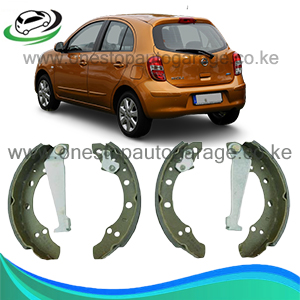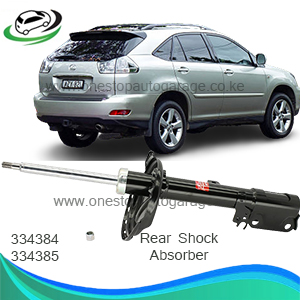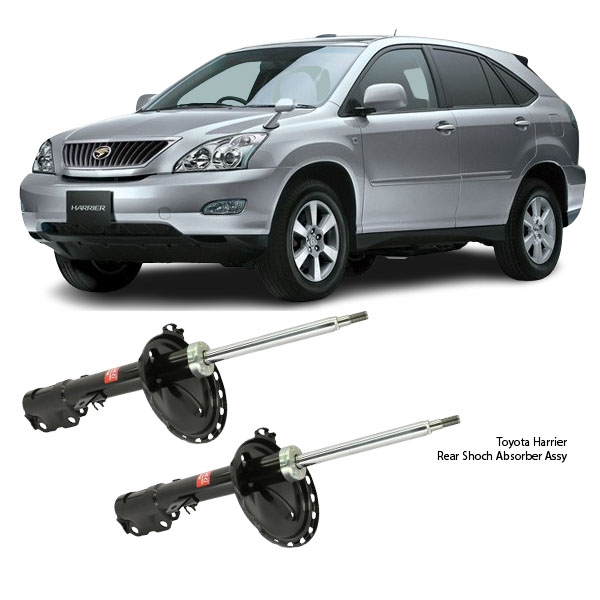-4%
A rear shock absorber is a vital part of a vehicle’s suspension system, designed to absorb road shocks, stabilize the vehicle, and enhance ride comfort. Whether you’re driving on smooth highways or rough terrain, a well-functioning rear shock absorber ensures safety, control, and a smooth ride.
In this detailed guide, we will cover:
✅ What a rear shock absorber is
✅ How it functions
✅ Different types of shock absorbers
✅ Signs of a failing rear shock absorber
✅ When and how to replace it
✅ Best brands and maintenance tips
Let’s dive in! 🚀
What is a Rear Shock Absorber? 🤔
A rear shock absorber (also called a damper) is a component of the suspension system located at the back of the vehicle. It absorbs and dissipates kinetic energy from road bumps, potholes, and uneven surfaces, ensuring your car remains stable and comfortable.
Components of a Rear Shock Absorber 🏗️
🔹 Shock Absorber (Damper) – The main component that absorbs shocks 🛞
🔹 Mounting Bushings – Rubber or polyurethane parts that cushion vibrations 🔩
🔹 Piston & Hydraulic Fluid – Controls motion through resistance 🛢️
🔹 Dust Cover/Boot – Protects the shock from dirt and debris 🚗
🔹 Coil Spring (For Some Models) – Helps absorb impact and support vehicle weight ⚙️
The rear shock absorbers mainly help in maintaining rear stability and reducing vehicle bounce during acceleration and braking.
Function of a Rear Shock Absorber 🚘
The shock absorber plays a crucial role in:
✅ Damping Road Impacts – Reduces vibrations and jolts from bumps and potholes 🛞
✅ Improving Handling & Stability – Ensures better rear-wheel traction 🏎️
✅ Reducing Tire Wear – Prevents uneven tire contact with the road 🔧
✅ Enhancing Braking Performance – Helps maintain rear traction during braking ⚠️
✅ Increasing Ride Comfort – Smoothens the ride for passengers 🚗💨
Without functional rear shock absorbers, your vehicle would bounce excessively, making it difficult to control and unsafe to drive.
Types of Rear Shock Absorbers 🔧
There are different types of rear shock absorbers depending on design and performance needs.
1️⃣ Twin-Tube Shock Absorbers
✔️ Most common type
✔️ Uses two tubes (inner and outer) for oil displacement
✔️ Cost-effective and durable
✔️ Suitable for daily driving 🚗
2️⃣ Monotube Shock Absorbers
✔️ Higher performance than twin-tube
✔️ Single tube with gas and oil separation
✔️ Offers better heat dissipation and damping control
✔️ Used in sports and performance vehicles 🏎️
3️⃣ Gas-Charged Shock Absorbers
✔️ Reduces foaming in hydraulic fluid for consistent performance
✔️ Provides firmer handling and stability
✔️ Ideal for high-speed driving and rough roads 🌄
4️⃣ Coilover Shock Absorbers
✔️ Combines shock absorber and coil spring in one unit
✔️ Allows height and stiffness adjustments
✔️ Used in racing and performance vehicles 🚗💨
5️⃣ Adjustable Shock Absorbers
✔️ Can adjust damping stiffness
✔️ Used in performance and off-road vehicles
✔️ Ideal for drivers who want custom ride settings 🔩
Choosing the right shock absorber depends on your driving style and road conditions.
Signs Your Rear Shock Absorbers Need Replacement 🚨
A worn-out rear shock absorber can lead to unstable driving and poor handling. Watch out for these signs:
🔴 Excessive Bouncing – Car continues bouncing after hitting bumps 🛞
🔴 Swerving & Poor Rear Stability – Rear end feels unstable, especially at high speeds 🏎️
🔴 Longer Braking Distance – Reduced traction increases stopping distance 🚨
🔴 Uneven Tire Wear – Cupped or bald spots on rear tires 🔧
🔴 Leaking Hydraulic Fluid – Visible oil leakage from the shock absorber 🛢️
🔴 Noisy Suspension – Clunking or knocking sounds over bumps 🔊
🔴 Vehicle Sags at the Rear – Rear end appears lower than the front ⚠️
If you notice any of these symptoms, it’s time to replace your rear shock absorbers.
How Often Should You Replace Your Rear Shock Absorbers? ⏳
📌 Recommended Replacement Interval:
✔️ 80,000 – 120,000 km (50,000 – 75,000 miles) under normal driving conditions
✔️ 40,000 – 80,000 km (25,000 – 50,000 miles) for rough terrain or aggressive driving
If you frequently drive on bad roads, tow heavy loads, or participate in high-speed driving, you may need earlier replacements.
How to Replace a Rear Shock Absorber? 🛠️
Replacing a rear shock absorber requires mechanical skills and tools.
🔹 Tools Needed:
✔️ Jack & jack stands 🏗️
✔️ Socket & wrench set 🔧
✔️ Torque wrench 🛠️
✔️ New rear shock absorbers 🚗
🔹 Step-by-Step Process:
1️⃣ Lift the Car & Remove the Rear Wheel – Use a jack and secure the car with stands 🏗️
2️⃣ Unbolt the Old Shock Absorber – Disconnect from suspension components 🔩
3️⃣ Remove the Old Shock – Carefully slide it out
4️⃣ Install the New Shock Absorber – Ensure correct alignment
5️⃣ Reassemble Suspension Components & Tighten Bolts – Use a torque wrench 🔧
6️⃣ Reattach the Wheel & Lower the Car 🚗
7️⃣ Test Drive & Check for Issues – Ensure smooth performance
⚠️ Caution: If your car has air suspension, additional steps may be required.
Best Rear Shock Absorber Brands 🏆
Choosing a high-quality shock absorber improves ride comfort and longevity.
✅ OEM Shock Absorbers (Toyota, Honda, Ford, Nissan, etc.) – Factory-installed quality
✅ KYB (Kayaba) Shock Absorbers – Excellent balance of comfort & performance
✅ Bilstein Shock Absorbers – Premium durability and handling
✅ Monroe Shock Absorbers – Great for daily driving and smooth rides
✅ Rancho Shock Absorbers – Ideal for off-road and rugged terrain
✅ Gabriel Shock Absorbers – Affordable and reliable option
📌 Tip: Always verify compatibility with your vehicle make and model before purchasing.
Maintenance Tips for Longer Shock Absorber Life 🛡️
✔️ Avoid Overloading Your Vehicle – Reduces stress on the shocks 🏗️
✔️ Drive Carefully Over Bumps & Potholes – Prevents excessive wear 🛞
✔️ Check for Leaks & Damage Regularly – Spot issues early 🔧
✔️ Replace in Pairs – Ensures balanced handling and stability 🚗
✔️ Perform Routine Suspension Inspections – Every 20,000 km
A well-maintained suspension ensures a comfortable and safe driving experience.
Conclusion – Enjoy a Smooth & Safe Ride! 🚗💨
Your rear shock absorbers play a crucial role in ride quality, handling, and braking performance. Timely replacement ensures better stability, comfort, and safety.
🔧 Key Takeaways:
✅ Replace shock absorbers every 80,000 – 120,000 km
✅ Choose high-quality brands for durability & performance
✅ Follow proper installation procedures for safety
✅ Regular maintenance extends shock absorber life
🚗💨 Upgrade your rear shock absorbers today and enjoy a smoother, safer ride! 🔧🏎️
Need help choosing the right shock absorber for your car? Let me know! 😊



